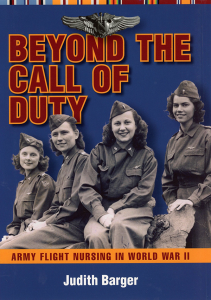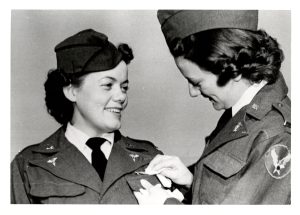Fourth in a Series of Seven Blogs about Drama in Nursing
Nurse Stereotypes in Movies
Handmaiden – The Nun’s Story
The nurse as doctor’s handmaiden has a religious origin as well. Sister Mary Berenice Beck’s 1945 The Nurse: Handmaid of the Divine Physician elucidates the religious basis, with its Dedication to Mary, “who nursed the Divine Physician in His infancy” and continues to serve at her shrine in Lourdes “as His chief handmaid, wondrously skilled in assisting His healing hand in its ministrations to the sick and suffering” and also to “every nurse who, as a true child of Mary, walks in her footsteps and serves, in the spirit which she served, THE DIVINE PHYSICIAN.” 1 The Nun’s Story, a 1959 film based on Kathryn Hulme’s book of the same title brought the handmaiden role of the nurse to the big screen. The story is set primarily in the motherhouse of a Roman Catholic convent in Antwerp, Belgium and in a missionary hospital in the Belgian Congo where Sister Luke – Gabriella Van der Mal – a nurse trained in tropical medicine, spends most of her career from her entry into the convent after World War I until her departure and return ‘to the world’ during World War II. When in the Belgian Congo, Sister Luke assists Dr Fortunati in the operating room as his surgical nurse. Hulme describes their working relationship, which is portrayed in the film:
He called her for every emergency and there were many in her first months. … “You may be in a convent but I am not,” he said. “When I want you I want you. You are paid by the government and therefore at its disposition. They don’t pay you to pray but to assist me. … If your Superior allows you to work for two, it means that you have to give twice the time to the hospital, and it means one less at prayers.” 2
Darbyshire and Gordon describe the handmaiden as a sort of lady-in-waiting to the doctor, trained to do his bidding. Subservience and obedience are at its root. Modern-day nurse handmaidens describe themselves as the eyes and ears – and right hand – of the doctor and may introduce themselves as Doctor So-and-So’s nurse. 3 The stereotype of nurse as handmaiden was at the core of the ward system prevalent in nineteenth-century British hospitals when nurses received their ‘marching orders’ from the doctor at the bedside.
William Gull, a nineteenth-century consulting physician to Guy’s Hospital, advocated the nurse-as-handmaiden role when he responded to Margaret Lonsdale’s article in The Nineteenth Century concerning the hospital nursing crisis:
In fact, there is no proper duty which the nurse has to perform, even to the placing of a pillow, which does not or may not involve a principle, and a principle which can be only properly met by one who has had the advantage of medical instruction. It is a fundamental and dangerous error to maintain that any system of nursing has sources of knowledge not derived from the profession, and that it can be maintained and advanced within its own sphere. 4
“In this handmaiden role,” write Darbyshire and Gordon, “the nurse is essentially an empty head who borrows the doctor’s knowledge, skill, and judgment, and acts as his agent … (a medicalized version of the angel nurse who is God’s agent).” 5 Such was the case when, in the first part of the nineteenth century, nurses were trained to observe a patient’s condition and notify the doctor, who was away from the ward for what he considered a better use of his time, when his presence was needed at the bedside.
Of the four common nurse stereotypes, the doctor’s handmaiden image continues to trouble nurses for its tacit expectation of obedience and subordination rather than evidence of an autonomous collegial relationship. As long as the medical profession is the gatekeeper, nurse Salvatore Gambarcorta writes, “figuratively speaking, we’re still wearing the handmaiden’s cap!” – taunted by the stereotype “as we continue to thrive in the hand of others rather than standing on our own two feet!” 6
The nurse as battle axe is the topic of the next Blog.
To learn how the history of nursing was reflected on the opera stage, see Judith Barger, The Nurse in History and Opera: From Servant to Sister (Lexington Books, 2024).
Notes
- Sister Mary Bernice (Beck), The Nurse: Handmaid of the Divine Physician: A Handbook of the Religious Care of the Patient (Philadelphia: Lippincott, 1945).
- The Nun’s Story [1959], directed by Fred Zinnemann,. produced by Henry Blanke, screenplay by Robert Anderson (Burbank, CA: Warner Home Videos DVD, 2005); Katherine Hulme, The Nun’s Story (Boston): Little, Brown, 1956), 163. Audrey Hepburn is Sister Luke.
- Darbyshire and Gordon, “Exploring Popular Images,” 77–78; Darbyshire, “Heroines, Hookers and Harridans,” 57.
- William Gull, “On the Nursing Crisis at Guy’s Hospital” I., The Nineteenth Century: A Monthly Review 7 (May 1880): 887–88.
- Darbyshire and Gordon, “Exploring Popular Images,” 77.
- Salvatore Gambacorta, “Handmaiden or Professional: The 5 Paradoxes of Nursing,” The Lamp, 24 February 2017.



